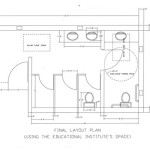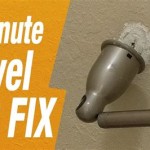How To Organize Your Bathroom Medicine Cabinet
The bathroom medicine cabinet, a seemingly small storage space, often becomes a repository for a diverse collection of items. Prescription medications, over-the-counter remedies, first-aid supplies, and personal care products can quickly accumulate, leading to clutter and disorganization. A well-organized medicine cabinet is crucial for easy access to essential items, efficient inventory management, and the safe storage of medications, minimizing the risk of accidental misuse or expired product usage. This article provides a comprehensive guide to effectively organizing a bathroom medicine cabinet, focusing on practical steps and strategies to maximize space and maintain order.
Step 1: The Purge - Decluttering and Expiring Dating
The initial step in organizing the medicine cabinet involves a thorough decluttering process. Remove all items from the cabinet and place them on a flat surface, such as a bathroom counter or table. This allows for a comprehensive assessment of the contents and provides the opportunity to clean the cabinet itself. This stage is critical for identifying expired medications, unused products, and items that no longer serve a purpose.
Begin by scrutinizing each item for its expiration date. Medications past their expiration dates should be disposed of responsibly. According to guidelines provided by the Food and Drug Administration (FDA), expired medications may be less effective or even harmful due to chemical changes over time. Proper disposal methods vary depending on the medication and local regulations. Common methods include drug take-back programs, authorized collection sites, and at-home disposal techniques.
For at-home disposal, follow the instructions provided on the medication label or package insert. If no specific instructions are available, the FDA generally recommends mixing the medication with an undesirable substance such as coffee grounds or cat litter, placing the mixture in a sealed bag or container, and discarding it in the trash. Certain medications, labeled as suitable for flushing, can be flushed down the toilet to prevent accidental ingestion or misuse, though environmental concerns surrounding this practice exist.
Beyond expired medications, assess the remaining items for usability. Discard products that have changed in color, texture, or odor, indicating potential spoilage or contamination. Eliminate items that are no longer needed or used, such as sample-sized products that have accumulated over time. Evaluate the packaging of each item for damage or compromise. Damaged containers can lead to spills, leaks, and product deterioration.
During the decluttering process, consider consolidating duplicate items. If multiple bottles of the same medication or product are present, combine them into a single container to save space. Ensure that the expiration dates are noted, and the bottle with the earliest expiration date should be prioritized for use.
Once the decluttering process is complete, thoroughly clean the inside of the medicine cabinet. Wipe down the shelves and surfaces with a damp cloth and mild cleaning solution. This removes dust, debris, and any spilled residue. Allow the cabinet to dry completely before restocking it with items.
Step 2: Categorizing and Planning
With the cabinet decluttered and cleaned, the next step involves categorizing the remaining items and planning the organization strategy. Grouping items by category allows for efficient retrieval and ensures that similar products are stored together. Common categories for medicine cabinet items include:
- Prescription medications
- Over-the-counter pain relievers
- First-aid supplies (bandages, antiseptic wipes, etc.)
- Cold and flu remedies
- Allergy medications
- Personal care products (skincare, dental care, etc.)
Consider the frequency of use for each category. Items used daily or frequently should be placed in easily accessible locations within the cabinet, while less frequently used items can be stored on higher or lower shelves. The placement of items should also consider safety. Medications, especially prescription drugs, should be stored out of reach of children and pets to prevent accidental ingestion.
Before restocking the cabinet, consider the available space and its configuration. Medicine cabinets come in various sizes and designs, with different shelving arrangements. Assess the height and depth of the shelves to determine the types of containers that can be used for storage.
Utilizing storage containers, such as clear plastic bins or baskets, can significantly improve organization and maximize space efficiency. Containers allow for the grouping of smaller items and prevent them from rolling around or getting lost in the cabinet. Labeling the containers with the category of items they contain further enhances organization and facilitates easy retrieval.
Adjustable shelves, if available, provide flexibility in customizing the storage space. Rearrange the shelves to accommodate items of different heights and sizes. Consider adding additional shelving units or organizers designed specifically for medicine cabinets to maximize the available space.
Door organizers, such as small shelves or pockets that attach to the inside of the cabinet door, can be useful for storing smaller items, such as cotton swabs, makeup brushes, or travel-sized toiletries. This utilizes otherwise unused space and keeps these items readily accessible.
Step 3: Implementation and Maintenance
With the categories defined, the storage solutions selected, and the cabinet cleaned, the implementation phase involves restocking the cabinet with the organized items. Place each item in its designated category and container, ensuring that the labels are visible and easy to read. Arrange the items in a way that maximizes space and allows for easy access.
Consider using a rotating system for medications and other products. Place newer items behind older ones to ensure that the older items are used first. This helps to prevent products from expiring before they are used.
For medications that require refrigeration, ensure that they are stored properly in the refrigerator. Do not store medications in the bathroom medicine cabinet if the bathroom is prone to high humidity or temperature fluctuations, as these conditions can affect the stability of the medications.
Once the medicine cabinet is organized, establish a maintenance routine to prevent clutter from accumulating and ensure that the organization system remains effective. Regularly review the contents of the cabinet, discarding expired items and unused products. Replenish supplies as needed, and maintain the organization system by returning items to their designated locations after use.
Periodically clean the medicine cabinet to remove dust, debris, and spills. This helps to maintain a hygienic environment and prevent the growth of mold or mildew. Wipe down the shelves and containers with a damp cloth and mild cleaning solution.
Consider conducting a more thorough decluttering and reorganization of the medicine cabinet at least twice a year, such as during spring cleaning and fall cleaning. This provides an opportunity to reassess the contents of the cabinet, discard expired items, and adjust the organization system as needed.
Educate all members of the household about the organization system and the importance of maintaining it. Encourage them to return items to their designated locations after use and to notify you when supplies are running low. By working together, everyone can contribute to maintaining an organized and efficient medicine cabinet.
By following these steps, individuals can transform their bathroom medicine cabinet from a cluttered mess into an organized and efficient storage space. A well-organized medicine cabinet not only improves accessibility to essential items but also promotes safety and reduces the risk of accidental misuse or expired product usage. The key to maintaining an organized medicine cabinet is to establish a consistent maintenance routine and to involve all members of the household in the process.

How To Organize Your Medicine Cabinet The Container

4 Easy Steps To Organizing A Medicine Cabinet Moving Insider

Medicine Cabinet Organization Your Complete Guide Organizemedicinecabin Bathroom Diy

How To Organize Your Medicine Cabinet In 2024 Organization Bathroom

How To Organize A Medicine Cabinet Domino

17 Genius Ideas To Organize Your Medicine Cabinet Kids Activities Blog

Medicine Cabinets The Idea Room

4 Simple Steps To Organize Your Medicine Cabinet Living Well Mom

9 Clever Ways To Organize Your Medicine Cabinet Diy Makeup Storage Organization Home

17 Genius Ideas To Organize Your Medicine Cabinet Kids Activities Blog
Related Posts







